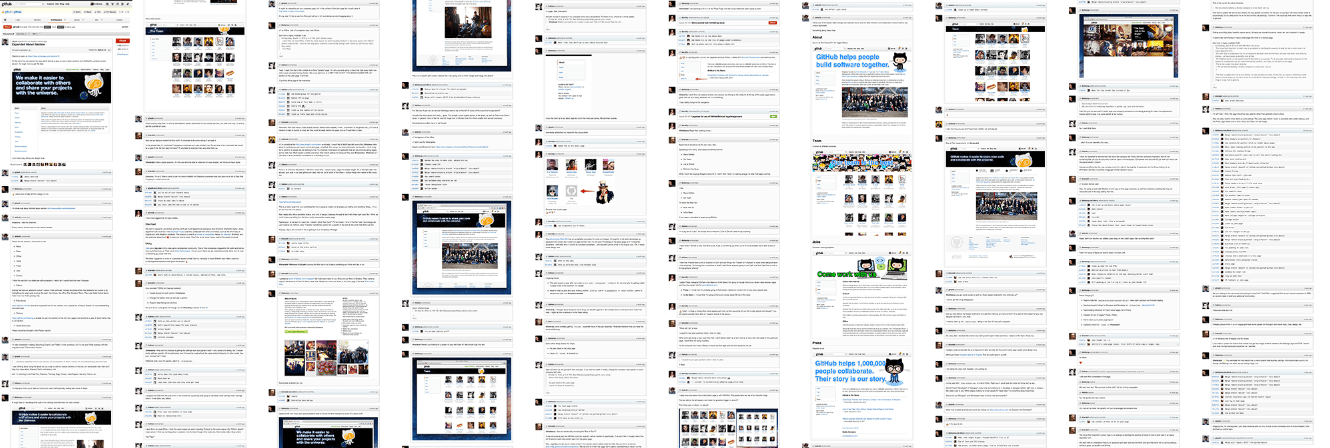How we use Pull Requests to build GitHub
We recently shipped a new About section. It has all sorts of stuff like high resolution logos, pictures of the GitHub team, a little bit about our story, recent press…
We recently shipped a new About section. It has all sorts of stuff like
high resolution logos, pictures of the GitHub team, a little bit about our story, recent press mentions and maybe most importantly positions
we’re hiring for. It’s awesome.
But that’s not the point of this post. Instead, let’s take
a look at how we used a massive Pull Request to ship this feature.
We talk a lot about how GitHub works in blog
posts and
talks and this is a great
example of how we use Pull Requests.
Here is what the PR looked like for the new
About page:

You’re looking at 130 commits and 91 comments from 10 different people over a two
month timespan. The discussion ranged from the original idea and HTML mock-up, to
Skitch mock ups from developers, to content strategy. There are designs posted
for review at various points. And of course, every commit to the branch is
tracked and ready for code review.
If you’ve ever talked to a GitHubber you’ll know we think Pull Requests are the
greatest thing ever. And not just because we invented them.
They are a great way to generate discussion around new ideas and recruit people to help out. Because we don’t have major organizational decisions, Pull Requests let people see what’s being worked on and they hop in where they think they’ll add the most value. It works a lot like an Open Source project.
Some tricks to make Pull Requests more awesome for your project:
-
Open a Pull Request as early as possible
Pull Requests are a great way to start a conversation of a feature, so start
one as soon as possible- even before you are finished with the code. Your
team can comment on the feature as it evolves, instead of providing all
their feedback at the very end. -
Pull Requests work branch to branch
No one has a fork ofgithub/github. We make Pull Requests in the same repository by opening Pull Requests for branches. -
A Pull Request doesn’t have to be merged
Pull Requests are easy to make and a great way to get feedback and track
progress on a branch. But some ideas don’t make it. It’s okay to close a
Pull Request without merging; we do it all the time.
Tags:
Written by
Related posts

From pair to peer programmer: Our vision for agentic workflows in GitHub Copilot
AI agents in GitHub Copilot don’t just assist developers but actively solve problems through multi-step reasoning and execution. Here’s what that means.

GitHub Availability Report: May 2025
In May, we experienced three incidents that resulted in degraded performance across GitHub services.

GitHub Universe 2025: Here’s what’s in store at this year’s developer wonderland
Sharpen your skills, test out new tools, and connect with people who build like you.